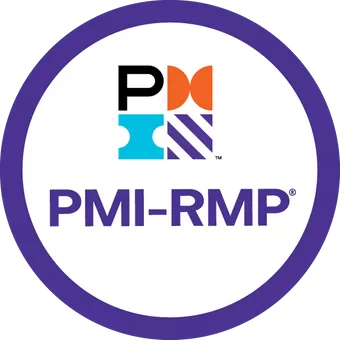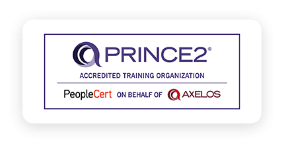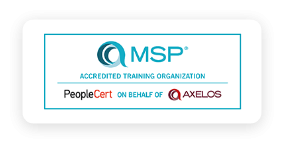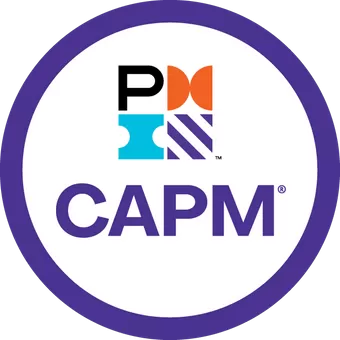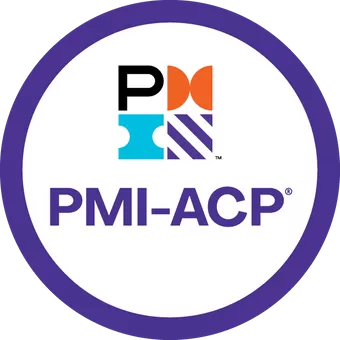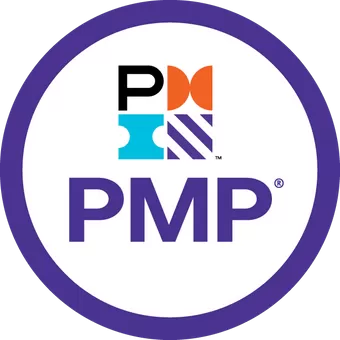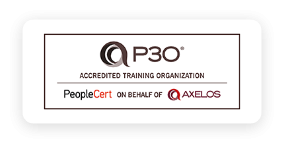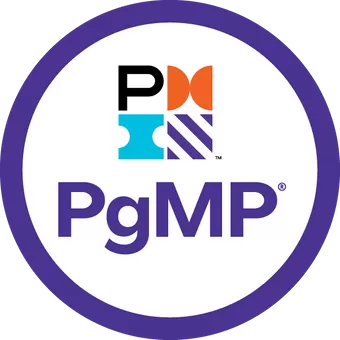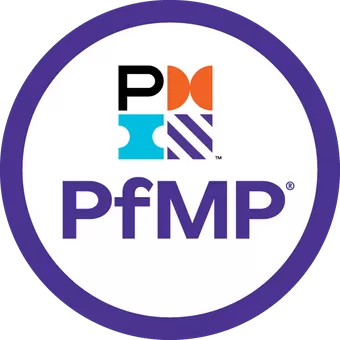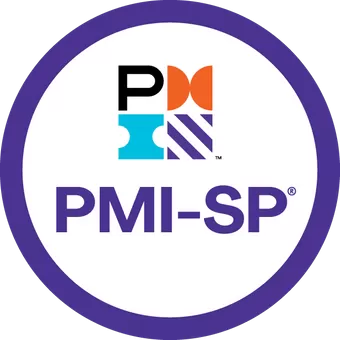
Change Control Boards (CCB) In Project Management And Its Analysis
Written By : Bakkah
25 Apr 2024
Unraveling the intricacies of Change Control Boards (CCBs) unveils their pivotal role in organizational governance. This article delves into the fundamentals of CCBs, elucidating their significance in reviewing, approving, and overseeing changes across processes, systems, and projects.
Additionally, it sheds light on the essential steps required to implement changes sanctioned by the CCB, ensuring smooth transitions and adherence to quality standards.
Whether you're navigating the complexities of CCB processes or seeking to enhance change management proficiency, this comprehensive guide provides invaluable insights into harnessing the power of CCBs for organizational success.
What is a Change Control Board (CCB)?
A Change Control Board (CCB) in Project Management is a governing body within an organization responsible for reviewing, approving, and overseeing changes to processes, systems, or projects. The primary role of the CCB is to ensure that proposed changes align with organizational goals, standards, and priorities while minimizing risks and disruptions.
The board typically consists of key stakeholders representing various departments or functions within the organization, such as project managers, department heads, technical experts, and quality assurance personnel.
The CCB evaluates change requests based on criteria such as impact analysis, feasibility, resource requirements, and potential risks. Once a change request is approved, the CCB may oversee its implementation, monitor progress, and ensure that any deviations from the approved plan are addressed promptly.
Overall, the CCB plays a crucial role in maintaining control and governance over changes within the organization, balancing the need for innovation and improvement with the requirement for stability and consistency.
What is CCB Project Analysis?
CCB Project Analysis" typically refers to the process of analyzing change requests within the context of a Change Control Board (CCB) framework in project management.
When a change request is submitted for consideration, it undergoes a thorough analysis by the CCB to evaluate its impact on the project's scope, schedule, budget, quality, and risks. This analysis involves assessing various factors to determine the feasibility, necessity, and implications of the proposed change.
During CCB project analysis, the board considers several key aspects:
1. Scope Impact
The CCB evaluates how the proposed change will affect the project's scope, including any additions, modifications, or deletions to project deliverables or objectives.
2. Schedule Impact
Analysis includes an assessment of how the change will impact project timelines, milestones, and deadlines. That helps determine whether the change can be accommodated within the existing schedule or if adjustments are necessary.
3. Budget Impact
The financial implications of the change are examined to assess its impact on project costs and resource allocations. This includes considering any additional expenses or savings resulting from the change.
4. Quality Considerations
The CCB evaluates whether the proposed change aligns with the project's quality standards and requirements. That ensures that changes do not compromise the overall quality or integrity of project deliverables.
5. Risk Assessment
The analysis includes identifying and assessing potential risks associated with implementing the change. That helps the CCB understand and mitigate any adverse effects or uncertainties introduced by the proposed change.
By conducting a comprehensive analysis of change requests, the CCB can make informed decisions about whether to approve, reject, defer, or escalate the change for further review. That ensures that changes are carefully evaluated and aligned with project objectives, constraints, and stakeholder needs, ultimately contributing to project success.
Responsibilities of a Change Control Board
The responsibilities of a Change Control Board (CCB) in project management encompass several key areas aimed at ensuring effective change management and project success. Some of these responsibilities include:
1. Reviewing change requests
The CCB is responsible for thoroughly reviewing all change requests submitted by project stakeholders. That involves assessing the proposed changes' scope, impact, feasibility, and alignment with project objectives.
2. Assessing Impact
Before making decisions on change requests, the CCB evaluates their potential impact on project scope, schedule, budget, quality, and risks. This assessment helps determine the overall ramifications of implementing the proposed changes.
3. Decision-making
The CCB makes informed decisions regarding the approval, rejection, deferral, or escalation of change requests. These decisions are based on the thorough analysis of each change request and consideration of its implications for the project.
4. Prioritizing changes
In cases where multiple change requests are under consideration, the CCB prioritizes them based on factors such as urgency, importance, and alignment with project goals. That helps ensure that resources are allocated appropriately to address high-priority changes.
5. Documentation
All decisions made by the CCB regarding change requests are documented systematically. This documentation includes the rationale behind each decision, supporting analysis, and any conditions or constraints associated with approved changes. Proper documentation ensures transparency and accountability in the change management process.
6. Communication
The CCB communicates decisions on change requests to relevant stakeholders, including project team members, sponsors, and other impacted parties. Clear and timely communication helps ensure that all stakeholders are informed about changes and understand their implications.
7. Continuous Improvement
The CCB may also be responsible for identifying opportunities to improve the change management process. That involves analyzing trends, reviewing feedback, and implementing enhancements to streamline procedures and enhance effectiveness.
By fulfilling these responsibilities, the Change Control Board plays a crucial role in managing project changes effectively, mitigating risks, maintaining project quality, and ultimately contributing to project success.
Change Control Board Members
The composition of a Change Control Board (CCB) typically includes individuals who possess the necessary expertise and authority to make informed decisions regarding project changes. While the specific members may vary depending on the organization, project, and industry, common CCB members often include:
1. Project Manager
The project manager is typically a key member of the CCB, providing insight into the project's goals, scope, schedule, and resources. They facilitate discussions and ensure that proposed changes align with project objectives.
2. Project Sponsor
The project sponsor holds ultimate accountability for the project's success and provides strategic direction. Their input is vital in evaluating proposed changes from a broader organizational perspective and aligning them with business objectives.
3. Subject Matter Experts (SMEs)
SMEs with expertise in relevant domains such as technology, finance, legal, or regulatory compliance contribute valuable insights to change assessments. Their specialized knowledge helps evaluate the technical feasibility and implications of proposed changes.
4. Quality Assurance Representative
A representative from the quality assurance or quality control team ensures that changes comply with established quality standards, processes, and best practices. They assess the potential impact of changes on product or service quality and customer satisfaction.
5. Customer or Stakeholder Representative
Including a representative from the customer or key stakeholders ensures that proposed changes consider their needs, expectations, and feedback. This perspective helps prioritize changes that deliver maximum value to stakeholders.
6. Functional Managers
Functional managers responsible for specific departments or areas impacted by proposed changes provide input on resource availability, operational implications, and alignment with departmental goals.
7. Change Manager or Change Coordinator
A dedicated change manager or coordinator facilitates the change management process, including documenting change requests, coordinating review meetings, and ensuring adherence to change management procedures.
8. Senior Management Representative
In larger organizations, a senior management representative, such as a department head or executive sponsor, may participate in the CCB to provide strategic guidance, allocate resources, and ensure alignment with organizational priorities.
By bringing together diverse perspectives and expertise, the Change Control Board ensures that proposed changes are comprehensively evaluated, aligned with project objectives, and effectively managed throughout the change.
Best Practices for CCBs
Change Control Boards (CCBs) are integral to managing changes within a project or organization efficiently. Best practices for CCBs include establishing clear roles, transparent communication, criteria for prioritization, documented decisions, stakeholder representation, adherence to processes, and ongoing review for optimization. Here is a detailed discussion of some best practices for effectively managing CCBs:
1. Clear Governance Structure
Establish a clear governance structure outlining the roles, responsibilities, and authorities of the CCB members. That ensures transparency and accountability in decision-making.
2. Defined Change Management Process
Develop a well-defined change management process that outlines the steps for submitting, reviewing, approving, implementing, and tracking changes. Make sure all stakeholders understand and adhere to this process.
3. Membership Diversity
Ensure that the CCB consists of representatives from relevant departments or functions within the organization. This diversity ensures that decisions consider various perspectives and potential impacts across the organization.
4. Qualified Members
Select members with the necessary expertise and experience to evaluate proposed changes effectively. That may include technical, financial, regulatory, and business knowledge, depending on the nature of the changes.
5. Transparent Communication
Maintain open and transparent communication channels within the CCB and with stakeholders affected by proposed changes. That facilitates collaboration, reduces misunderstandings, and fosters trust in the decision-making process.
6. Risk Management
Evaluate the potential risks associated with proposed changes, including their impact on project timelines, budgets, quality, and compliance. Make informed decisions based on risk assessments to mitigate negative consequences.
7. Documentation and Tracking
Document all change requests, discussions, decisions, and outcomes systematically. Establish a centralized repository for storing this information and tracking the status of proposed changes throughout the lifecycle.
8. Timely Decision-Making
Ensure timely review and decision-making on change requests to prevent delays in project delivery or process execution. Set clear deadlines for reviewing and approving changes to maintain project momentum.
9. Continuous Improvement
Regularly review the effectiveness of the change management process and the performance of the CCB. Identify areas for improvement and implement necessary changes to enhance efficiency and effectiveness.
10. Training and Awareness
Provide training and awareness programs to CCB members and stakeholders on change management principles, processes, and tools. That equips them with the knowledge and skills needed to participate effectively in change control activities.
By following these best practices, organizations can establish robust change control processes facilitated by CCBs, ensuring that changes are managed effectively while minimizing risks and maximizing benefits.
Implement a Change Request Approved by the CCB
Implementing change requests approved by the Change Control Board (CCB) demands careful planning and execution. It involves reviewing request details, coordinating with stakeholders, executing the plan, validating changes, and documenting the process meticulously. Through these steps, organizations ensure smooth transitions while maintaining quality and accountability.
Here are the essential steps involved in implementing a change request approved by the CCB:
1. Review Change Request Details
Before proceeding with the implementation, thoroughly review the approved change request documentation. Verify that all necessary information, including scope, impact analysis, and proposed solution, aligns with the approved change.
Ensure clarity on timelines, resource requirements, and any dependencies associated with the change.
2. Coordinate with Stakeholders
Engage with relevant stakeholders to communicate the upcoming change implementation. Clarify roles, responsibilities, and expectations to ensure smooth execution.
Collaborate with project managers, team leads, and affected parties to address any concerns and align on the implementation plan. Maintain open channels of communication to facilitate a coordinated effort.
3. Execute Change Implementation Plan
Execute the approved change implementation plan according to the established timelines and procedures. Follow predefined protocols and best practices to minimize disruptions to ongoing operations.
Monitor progress closely and address any unforeseen issues promptly. Coordinate with technical teams, vendors, or external resources as needed to ensure successful execution.
4. Validate Implemented Changes
Once the change has been implemented, conduct thorough validation to ensure it meets the predefined objectives and requirements. Perform functional and regression testing to verify the stability and functionality of affected systems or processes.
Obtain sign-off from key stakeholders to confirm that the implemented changes align with expectations and adhere to quality standards.
5. Document and Report Change Implementation
Document all aspects of the change implementation process, including activities performed, outcomes achieved, and any lessons learned. Compile comprehensive reports detailing the implementation status, including any deviations from the original plan and their resolutions.
Provide relevant documentation to the Change Control Board (CCB) for review and archiving purposes. Ensure transparency and accountability throughout the change implementation lifecycle.
By following these steps meticulously, organizations can ensure the successful implementation of CCB-approved change requests, fostering efficient operations and continuous improvement.
Elevate Your Project Management Skills with Bakkah's Expert-Led Courses!
Explore the realm of Change Control Boards (CCB) and project management with Bakkah's extensive range of courses.
Whether you're pursuing Project Management Professional (PMP), Certified Associate in Project Management (CAPM), and Project Management Institute Agile Certified Practitioner (PMI-ACP) to ITIL certifications, we offer specialized training tailored to your career goals.
Dive into risk management, portfolio management, and Lean Six Sigma methodologies (Yellow, Green, or Black Belt) to become a well-rounded project management professional.
Don't miss out on our specialized courses in DevOps, COBIT, and MSP. Take the next step in your career journey and enroll with Bakkah Learning today!
Conclusion
In summary, a Change Control Board (CCB) oversees changes within an organization, ensuring alignment with goals while minimizing risks. By reviewing, coordinating, executing, validating, and documenting change implementations meticulously, organizations can navigate transitions effectively.
Embracing best practices and structured approaches is essential for maximizing the benefits of CCB-approved changes, leading to project success and organizational resilience.



